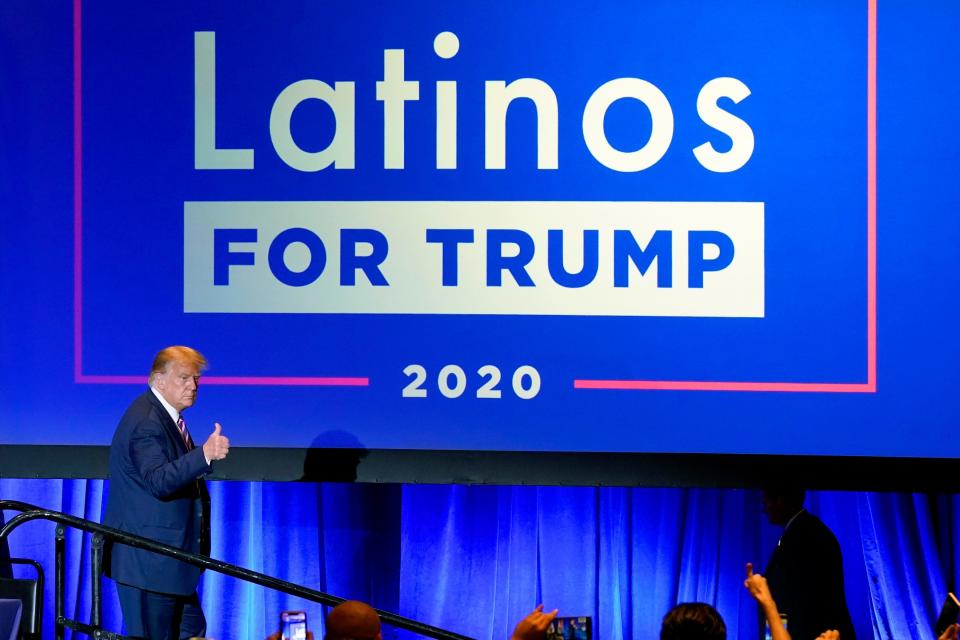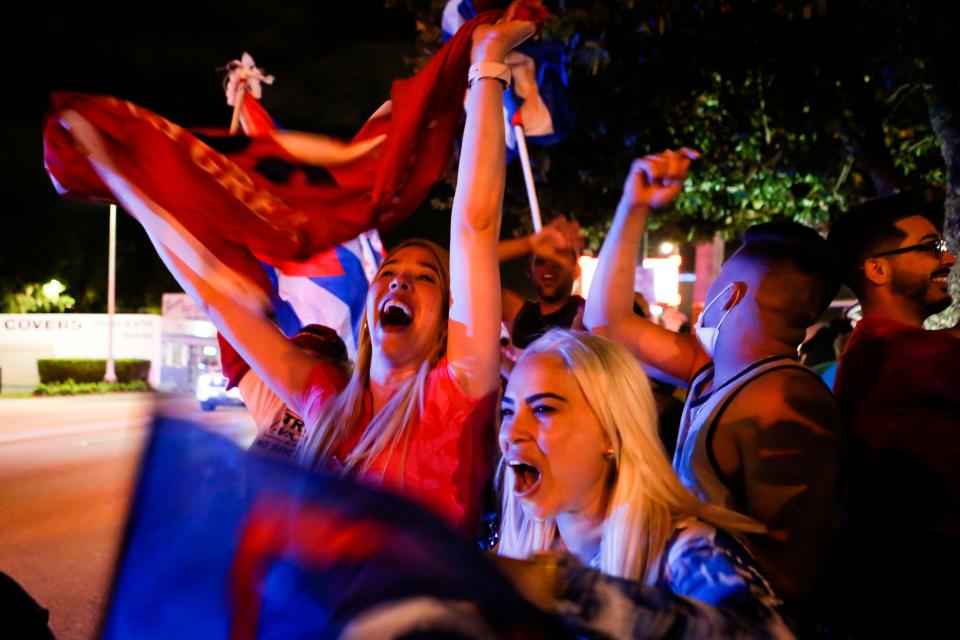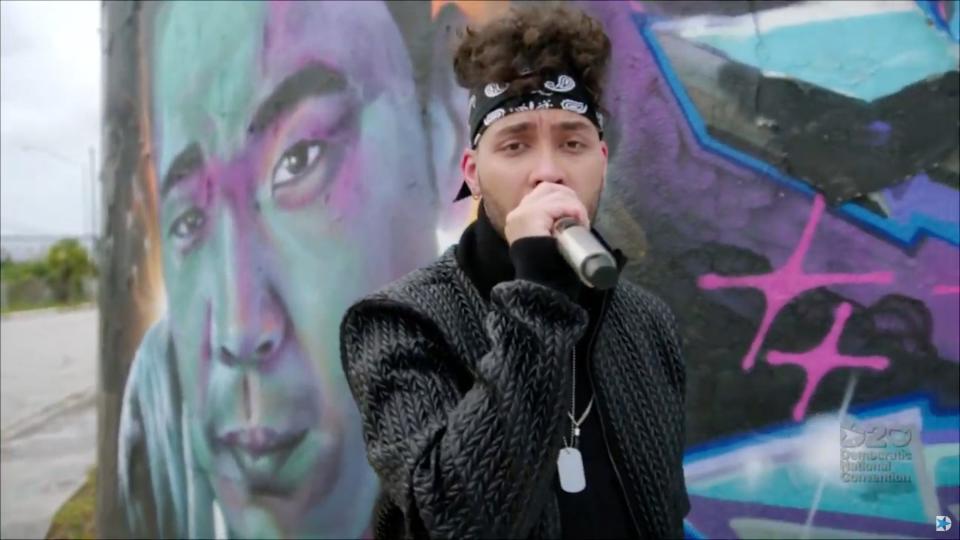Latinos for Trump, Arizona vote for Biden shows diversity of Hispanics in US

Cuban Americans in Miami helped President Donald Trump win the key battleground state of Florida. Latinos in Arizona contributed to that state flipping to blue for the first time in two decades. Mexican Americans along the Texas border with Mexico helped Trump hold on to the Lone Star State.
The outcome of the 2020 presidential election remained in flux Wednesday, as final votes were tallied in several key states. But one certainty emerged from the race: U.S. Latinos are a diverse group of voters that don't vote as a monolith and have an increasingly important role in election outcomes.
"Clearly, Latino voters proved to be critical to both sides," said Clarissa Martinez de Castro, deputy vice president at UnidosUS, a nonpartisan Latino advocacy group. "This really lifts up something we’ve been telling parties for two decades: Candidates matter, their positions matter, but meaningful outreach is essential."

One reason for such diversity in the Latino vote is the ever-widening range of different Latino experiences and histories across the nation, said Heather Silber Mohamed, a political scientist at Clark University in Worcester, Massachusetts, and author of "The New Americans?: Immigration, Protest, and the Politics of Latino Identity."
Many Cubans and Venezuelans in Miami come from a background of fleeing oppressive socialist regimes, while some Mexican Americans are more attuned to the immigrant experience of fleeing poor countries in search of economic improvement, she said.
All told, U.S. Latinos represent more than 20 countries and the U.S. Commonwealth of Puerto Rico, Mohamed said.
"That’s a vast range of political experience that people bring with them to the United States and use as a lens to interpret politics in the United States," she said.
Latinos are increasingly playing a growing role in U.S. elections. Based on early voting numbers, more than 14.6 million Latino voters were expected to vote in the presidential election, up from 12.6 million four years ago, according to estimates by the National Association of Latino Elected and Appointed Officials Educational Fund. Driving that rise is a 313% increase in young voters age 18 to 29, according to the estimates.
One of the key stories of Tuesday night occurred in Miami-Dade County, home to Florida's large Cuban community, along with Venezuelans, Colombians and other Latino groups. After months of social media engagement and on-the-ground outreach by both parties, Latinos helped carve into the Democrats' hold on the county. Democratic challenger Joe Biden won the county by just 9 percentage points – far less than Hillary Clinton's 30-point lead in 2016.
Trump's hardline stance on Cuba and Venezuela gained favor among the county's Cubans and Venezuelans, and social media memes and YouTube ads linking Biden to socialism also garnered support among South Florida voters fleeing such regimes, said Jorge Duany, head of the Cuban Research Institute at Florida International University.
The result was massive Trump rallies in Cuban neighborhoods and boat parades with Trump flags fluttering around Miami's Biscayne Bay in the months leading up to the election. At the same time, the county elected its first non-Latino mayor in decades – a Democrat who supported Biden and campaigned with former President Barack Obama –- and two Cuban Americans to Congress.

"There's a lot of shifting ground," Duany said.
It wasn't just Cubans. In Orange and Osceola counties, home to Florida's burgeoning Puerto Rican community, Trump also gained tens of thousands of votes from his 2016 totals.
Carlos Odio, a Florida-based Latino pollster, cautioned that even if Biden had won Miami-Dade County by Clinton’s same margin, he would have lost the state by 170,000 votes. Biden underperformed Clinton in 54 of Florida’s 67 counties, Odio said in a series of Tweets.
“There’s clearly a massive problem in Miami-Dade, but it’s not the whole story in Florida,” Odio tweeted.
In Texas, heavily-Latino counties along the border with Mexico, such as Hidalgo, Starr and Webb, stayed Democratic but saw significant gains toward Trump. In Starr County, which is 96% Hispanic, the number of Trump voters soared from 2,218 in 2016 to 8,224 in 2020 – a 200% jump.
Maria Miller, an organizer with Latinos for Trump, which is not associated with the president's official reelection campaign, said she wasn't surprised by the gains. During an RV tour she and others in the group took over the summer to cities across Texas, from the Rio Grande Valley to Dallas, Trump supporters flocked to the group's RV to ask about registration or share enthusiasm about the race, she said.
"They were so appreciative of us coming out and doing engagement with the population," Miller said. "You can only phone bank and robocall so much. You need to go out into the community and talk with them."
Though Latinos may vary on support for candidates, they're fairly uniform in the issues that are important to them, Martinez said. In interviews conducted just before the election, Latinos across the country pointed to the handling of the coronavirus, followed by higher wages and reducing the cost of health care as priorities, she said.

"Regardless of who they voted for, there’s a great deal of alignment on top priorities and concerns," Martinez said.
Latinos also vary in what motivates them. In Arizona, grassroots Latino activists have been urging Latino voters to the polls for more than a decade, ever since the passage of Senate Bill 1070, which authorized law enforcement to enforce federal immigration laws. Major provisions of the law were later struck down by the U.S. Supreme Court but it galvanized local Latino activism, Mohamed said.
"Since that time, there's been a lot of grassroots mobilizing," she said. "It seems like yesterday's results are indicative of that work."
Maricopa County, Arizona's most populous and one-third Hispanic, increased its percentage of Democratic voters from 46% in 2016 to 52% in 2020, helping to flip the state blue for the first time since 1996.
Follow Jervis on Twitter: @MrRJervis.
This article originally appeared on USA TODAY: Latinos for Trump? Hispanic voters more diverse than many realize